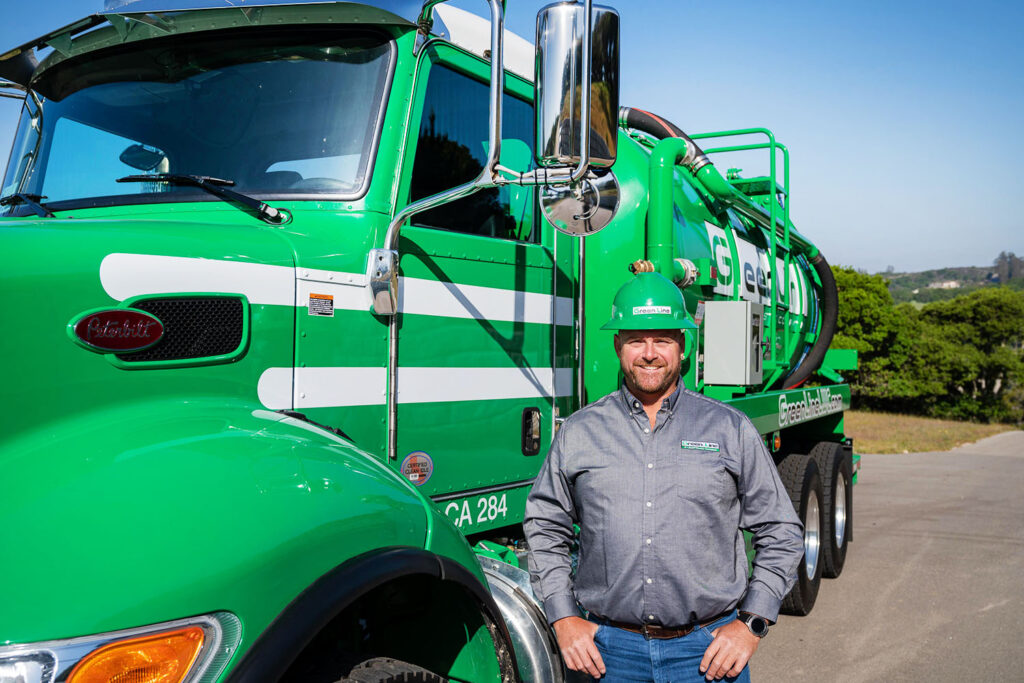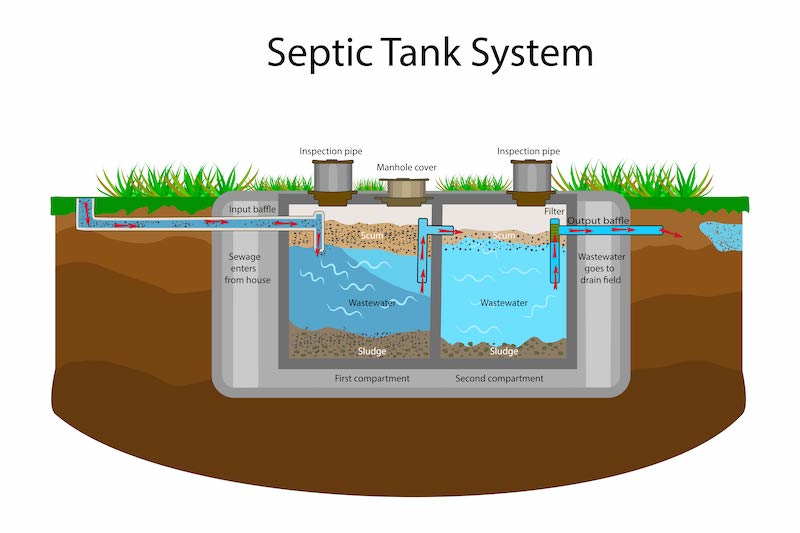Designed to stay one step ahead
About
Green Line has roots back to 1955 making it one of the oldest if not THE oldest liquid waste and septic cleaning companies in the Central Coast of California. Our roots date back to a gentleman named Lee Fletcher, who in 1955 opened the first Roto Rooter Franchise in Monterey County. In the mid nineteen seventies, Lee passed the business on the Priscilla and John Grider, the second generation of the Fletcher family. Later in the seventies, the Griders purchased Toms Septic Tank Service, a company founded by Tom Moore. Toms was focused on septic tanks, mainly residential in nature. Soon after, a commercial venture was launched by the Griders and they named it Green Line Liquid Waste Haulers. In 2006, the business was passed to the third generation, Kim and David Phillips who developed Green Line into a liquid waste company with services including the pumping and hauling of sewage, grease and other liquid wastes, as well as the hydro-jetting of waste lines, video and closed-circuit televising of sewage lines and waste pipe systems. Today, the company is a part of the Don Chapin Family of companies and is known as Green Line, a Liquid Waste Company. Together with their sister company Toms, Green Line is the most established, largest, and most comprehensive liquid waste service company on the Central Coast of California boasting roots that go back more than sixty five years.
Our Goals
Green Line strives daily to provide quick, responsive and affordable services to commercial, industrial and residential customers. We serve the communities of Monterey, Santa Cruz, San Benito and Southern Santa Clara Counties. Green Line is much more than just a pumping and hauling company. We offer a wide variety of services from grease trap servicing, waste pumping, hydro-jetting to video inspection services. We work closely with our family of companies that can take care of virtually any service, repair or replacement need. Green Line in conjunction with our family of companies has installed, serviced or repaired nearly every septage disposal system in the Tri County area. We have an extensive collection of records that show location, size and design parameters of many of the counties septage systems. This extensive database of valuable information will save both time and money when it comes time to service your system. Green Line prides itself on having state of the art equipment that will help get every job completed in a timely manner. Green Line is a company that will keep your drain systems clean and operating properly while keeping your business in compliance with the local governing agencies.

Your Septic System Is Your Responsibility!
Did you know that as a homeowner you’re responsible for maintaining your septic system? Did you know that maintaining your septic system protects your investment in your home? Did you know that you should periodically inspect your system and pump out your septic tank?
If properly designed, constructed and maintained, your septic system can provided long-term, effective treatment of household wastewater. If your septic system isn’t maintained, you might need to replace it, costing you thousands of dollars. A malfunctioning system can contaminate groundwater that might be a source of drinking water. If you sell your home, your septic system must be in good working order.
Protect Your Septic System:
Inspect
1. Inspect your system (every three years) and pump your tank as necessary (generally every three to five years).
Efficiency
2. Use water efficiently.
Hazardous Waste
3. Don’t dispose of household hazardous wastes in sinks or toilets.
Care
4. Care for your drainfield. Avoid driving or parking vehicles on your drainfield. Plant only grass over and near your drainfield to avoid damage from roots.
How Does It Work?
A typical septic system has four main components: a pipe from the home, a septic tank, a drainfield and the soil. Microbes in the soil digest or remove most contaminants from wastewater before it eventually reaches groundwater.
The septic tank is a buried, watertight container typically made of concrete, fiberglass or polyethylene. It holds the wastewater long enough to allow solids to settle out (forming sludge) and oil and grease to float to the surface (as scum). It also allows partial decomposition of the solid materials. Compartments and a T-shaped outlet in the septic tank prevent the sludge and scum from leaving the tank and traveling into the drainfield area. Screens are also recommended to keep solids from entering the drainfield.
The wastewater exits the septic tank and is discharged into the drainfield for further treatment by the soil.
Microorganisms in the soil provide final treatment by removing harmful bacteria, viruses and nutrients.
